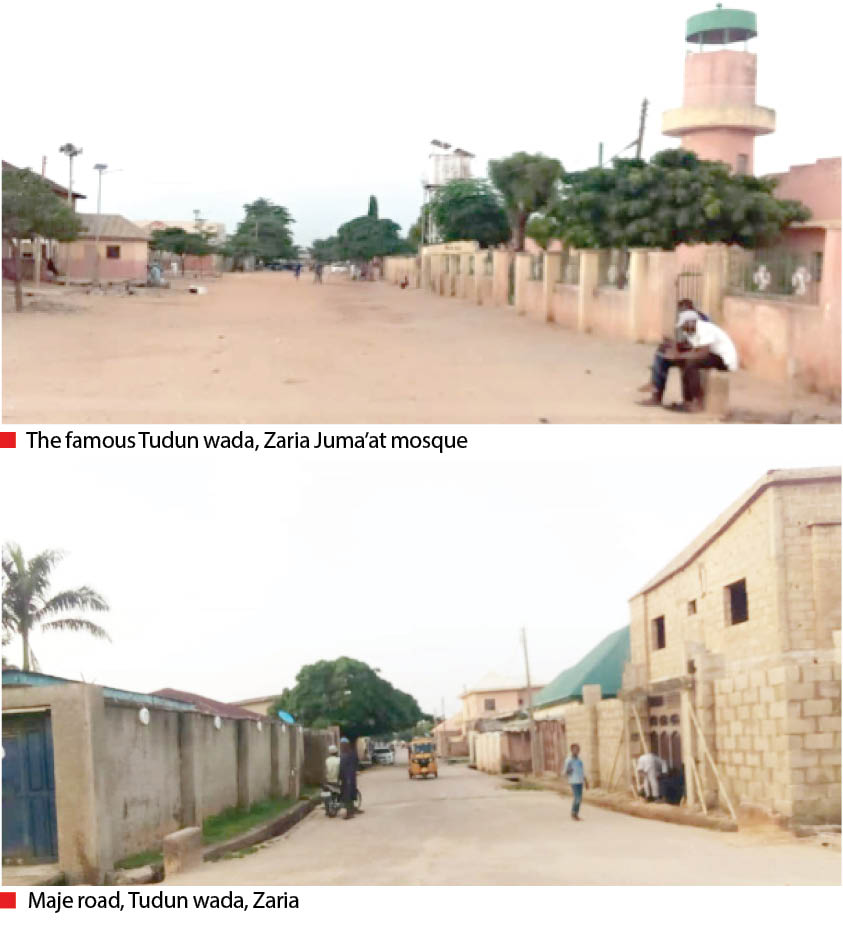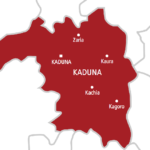Tudun Wada, Zaria was officially founded and fully developed in 1911 when the British colonial masters settled in the area for governance.
It was during the reign of the then Emir of Zazzau, Mallam Aliyu Dan Sidi, who reigned between 1903 and 1920.
However, some historians argued that the area had been in existence for over 500 years but was not fully developed; it became a complete settlement after the arrival of British colonial masters.
The settlement, which is located outside the ancient wall that surrounded the city of Zazzau in Zaria Local Government Area of Kaduna State, was inhabited largely by settlers from the northern part of the country.
- Kabong-Tudun Wada road: Lalong asked to pay N218m compensation
- 200m illegal arms in circulation in Nigeria – Gov Sani
This, according to the historians, is obtainable in all ancient Hausa cities in the North, where emirs allocated places outside the main city for settlers, who were largely Muslims from the North, and named it Tudun Wada.
Another settlement known as Sabon Gari (New Town) was also located away from the ancient city for Christian settlers from the South.
87-year-old Ubandi Mohammed, popularly known as “Team Manager,” who grew up in Layin Musan Gwarzo, Tudun Wada, Zaria, said although he could trace his origin to Kano, his parents settled at Tudun Wada, Zaria when he was two years old.
He said that Tudun Wada was fully developed by British colonialists who chose to reside outside the ancient city wall of Zaria, while some of them resided at the GRA.
Mohammed noted that the colonial masters also brought “employed helps” to cater for their official and domestic needs, and they later settled in the area.
“Tudun Wada was a settlement for people from northern extraction, who mostly came to work as labourers in various companies established in Zaria.
“Also, some of the settlers were merchants, scholars and entrepreneurs. A lot of them were employees of various companies established during the colonial era, including railways, cotton and groundnut processing industries etc,” he noted.
He recalled that during those days, there were only 10 streets in the whole of Tudun Wada, noting that those streets transformed and created all the streets and lines in the community presently.
“The streets, as designed by the colonial masters, were Layin Siliki, Layin Na Matazu, Layin Rimi, Layin Jigba, Layin Wawa and Layin Sarki.
“Others were Layin Joji, Layin Lemu, Layin Barebari and Layin Na Bawa.”
He explained that each street had two components that constituted the line: the upper part and the lower part of the street.
Team Manager further explained that the upper part of each line consisted of only 22 houses; the lower part of the street also had 22 houses. By this analysis, each street in the old Tudun Wada settlement had only 44 houses.
“When you multiply this by the 10 streets that existed at that time, you would see that there were only 144 in Tudun Wada,” he added.
Mohammed pointed out that Layin Labadiya and Layin Makafi were developed when there was increase in population in the settlement. Layin Abubakar Imam was later founded and called Sabon Layi (New Street), along with Mora Road, which was earlier called Layin Kalgo because of its bushy status.
Mohammed, a sports enthusiast, recalled that the 10 streets that formed the initial Tudun Wada settlement were not called by the names they are identified with presently.
“As I told you, they were the invention of the colonial masters; therefore, apart from being numbered, the streets were also coded in alphabetical order. For example, Layin Siliki, which was the first street, was coded as A1 for the upper part of the street and A2 for the lower part. Layin Na Matazu being the second street, was coded B1 and B2, also for the upper and lower parts of the street. Therefore, if your house was located in Layin Na Matazu, for example, which was the third street, and it is number 14, your residence would be addressed as D-14,” he explained.
Team Manager, however, said the settlement was blessed with prominent personalities who produced leaders like former Vice President Namadi Sambo, the vice presidential candidate of the Labour Party, Dr Yusuf Datti Baba-Ahmed and Dr Hakeem Baba-Ahmed, the spokesperson of the Northern Elders Forum.

 Join Daily Trust WhatsApp Community For Quick Access To News and Happenings Around You.
Join Daily Trust WhatsApp Community For Quick Access To News and Happenings Around You.


